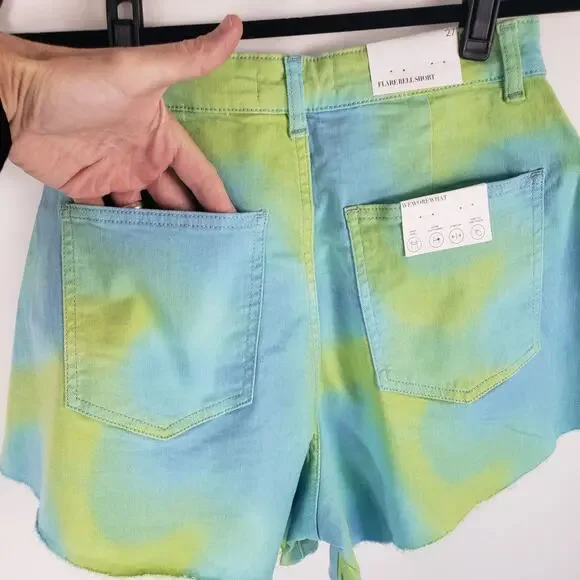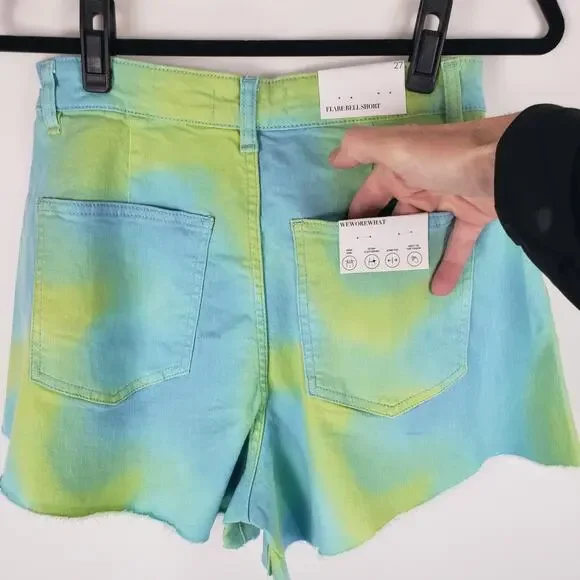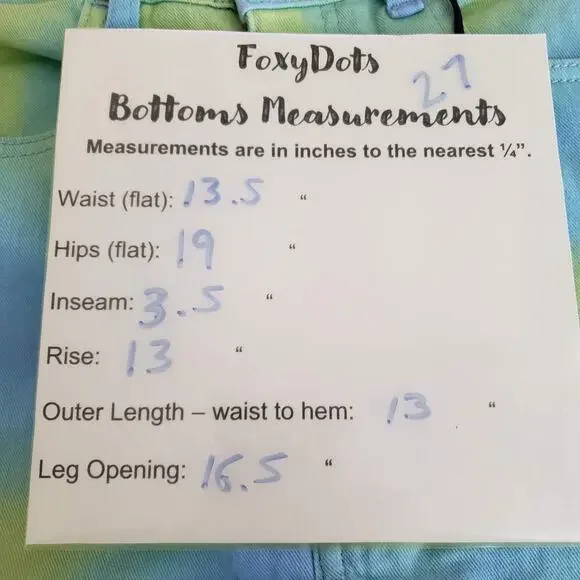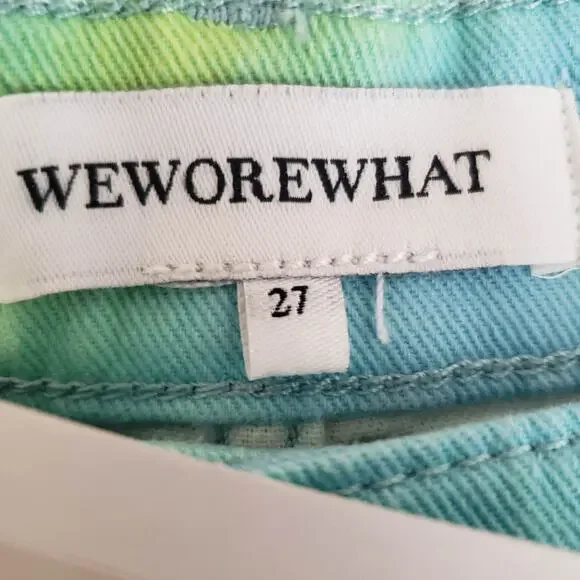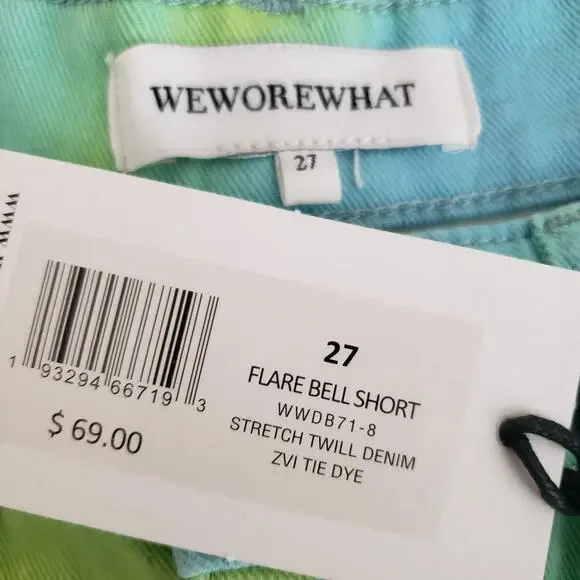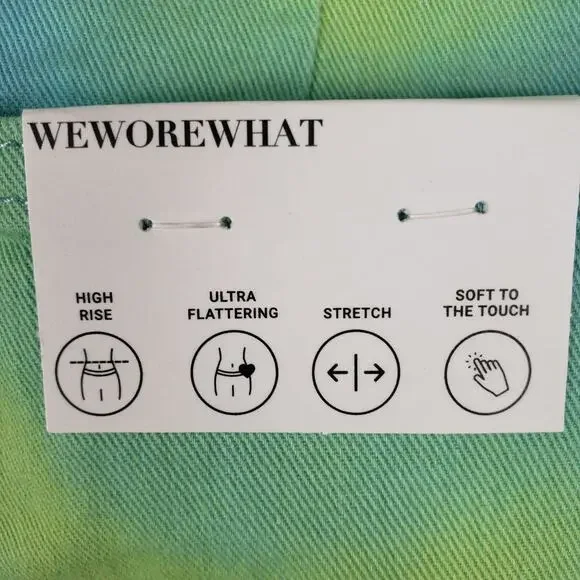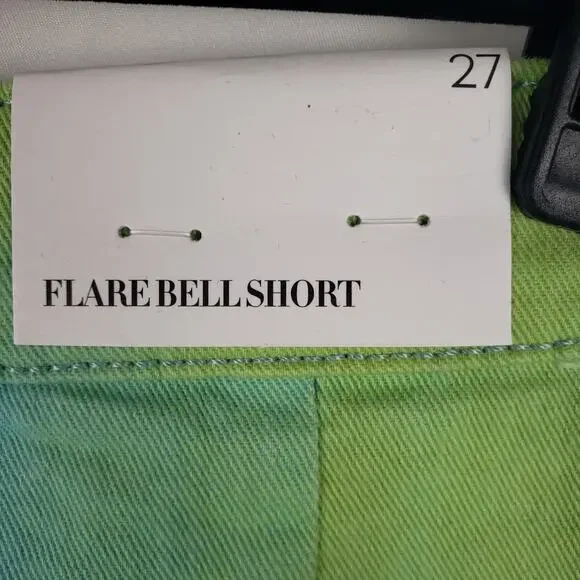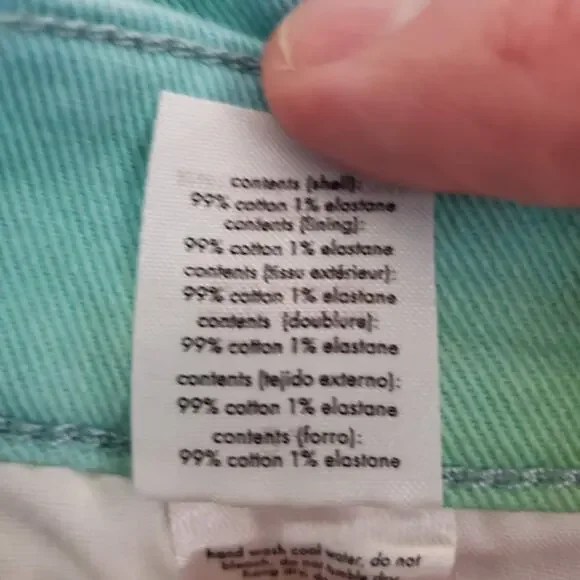
NWT WeWoreWhat Twill Flare Bell Tie Dye Frayed Hem High Rise Denim Shorts 27
 Limited Time Sale
Limited Time Sale$19.60 cheaper than the new price!!
Free cash-on-delivery fees for purchases over $99
Product details
| Management number | 3979408 | Release Date | 2025/08/04 | List Price | $36.40 | Model Number | 3979408 | ||
|---|---|---|---|---|---|---|---|---|---|
| Category | |||||||||
Additional Details: WeWoreWhat is a Revolve brand. Unfinished frayed hem. High rise. Stretch denim. Super soft, 99% cotton blend.Color: Lime green and sky blue / aqua tie dye*Colors may be slightly off due to lightingCondition: new with tags / excellent / flawless - no flawsRetail Price: $69Fabric: see photosSee measurements in photos.Usually ships same day or next day.Offers welcomeBundle & Save70s, 70s-inspired, tie-dye, retro, retro print, boho, bohemian, boho chic, loose, loose fitting, loose-fitting, high waist, high-waist, high rise, high-rise, highrise, high-waisted, high waisted, adorable, cheery, cute, funky, pretty, unique, americana, casual, comfortable, comfy, relaxed, in style, in-style, stylish, dainty, delicate, feminine, flirty, sassy, whimsical, stretchy, practical, versatile, beach, beachy, backyard party, party, BBQ, BBQ party, lounge, loungewear, lounge wear, skate, surf, sun, street, streetwear, sand, swim, swim cover, cover up#24/30-14270869
Correction of product information
If you notice any omissions or errors in the product information on this page, please use the correction request form below.
Correction Request Form





